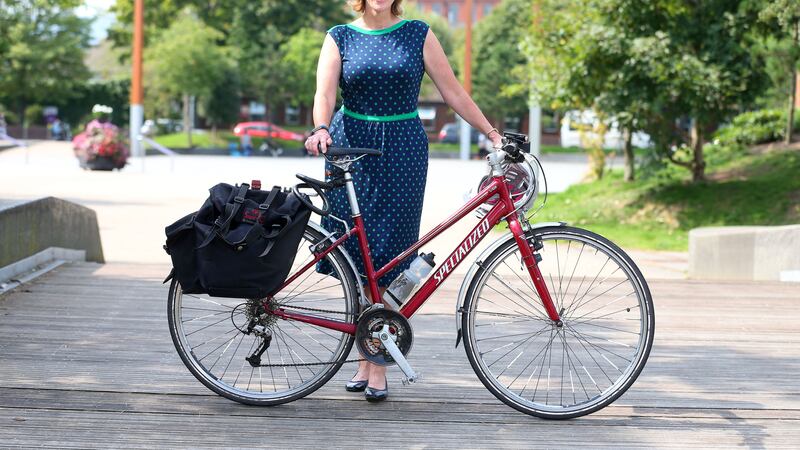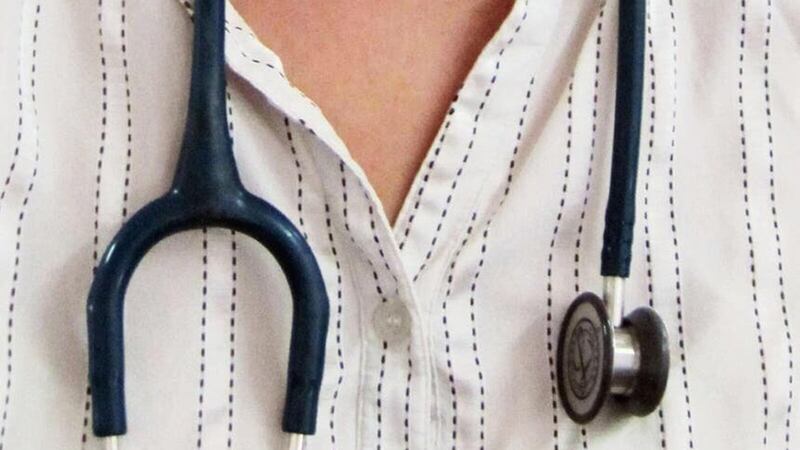“On one Saturday afternoon in the (Belfast) Harbour Estate I think I saw more families cycling than I had on the whole of the last summer.”
Caroline Bloomfield, director of walking and cycling charity Sustrans NI, has been heartened by the increased interest in cycling during lockdown.
The 53-year-old has cycled to work almost every day for the last 30 years, including during periods living in London and France.
But even she has been surprised by the number of cyclists in recent months.
“I was astonished to see the numbers of people on bicycles, especially the number of families,” she said.
“On greenways especially where there was safe protected infrastructure I saw so many people of all ages cycling from the smallest children on balance bikes up to quite elderly people and that rarest of things - teenage girls on bikes. There were lots of teenagers who looked like they were discovering for themselves the joy and freedom of being able to cycle about.”
Ms Bloomfield took up her post in July after almost two decades working for the Public Health Agency.
She said the coronavirus pandemic has “given a renewed impetus to everybody to think about diet and lifestyle”.
“We know all the huge health benefits that cycling and walking can bring whether it’s reduced coronary heart disease, type two diabetes, stroke and so on but also the mental health and wellbeing benefits that being physically active can bring,” she said.
She said social distancing restrictions have prompted infrastructure changes including the pedestrianisation of Hill Street and Gordon Street in Belfast and the setting up of several temporary cycle lanes in the city and Derry.
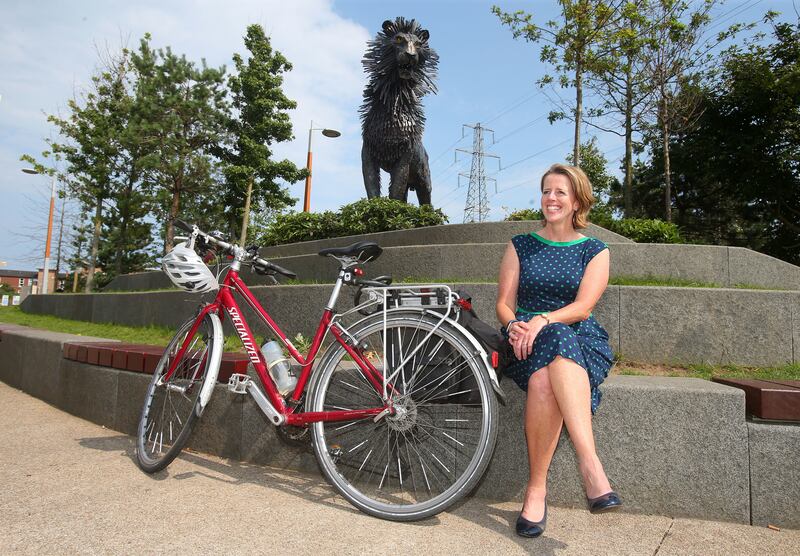
Ms Bloomfield said better infrastructure is crucial in encouraging more people to cycle.
“I think it’s viewed very often as something men do more than women and certainly the (Sustrans) Bike Life report found that 19% of men in Belfast cycle once a week or more but only 5% of women do,” she said.
“If we want to see more women, children and older people cycling we absolutely need more protected bicycle lanes and more greenways where people feel safe and confident.”
She said paths on the National Cycle Network are designed to be safe enough for a 12-year-old to use but “most of our roads wouldn’t fit that criteria”.
The Irish government has committed €360 million to active travel and Ms Bloomfield hoped the north could follow the Republic’s lead.
“Money is always an issue but I think in Northern Ireland we have the lowest per capita investment in active travel in the UK and Ireland,” she said.
“I think sometimes it’s about re-prioritising where the roads budget goes. Could we reprioritise away from cars and roads and more into active travel? Chris Boardman is the walking and cycling commissioner in Greater Manchester and he was being criticised for spending £150 million on active travel infrastructure until he pointed out that that’s the same amount that one roundabout costs.”
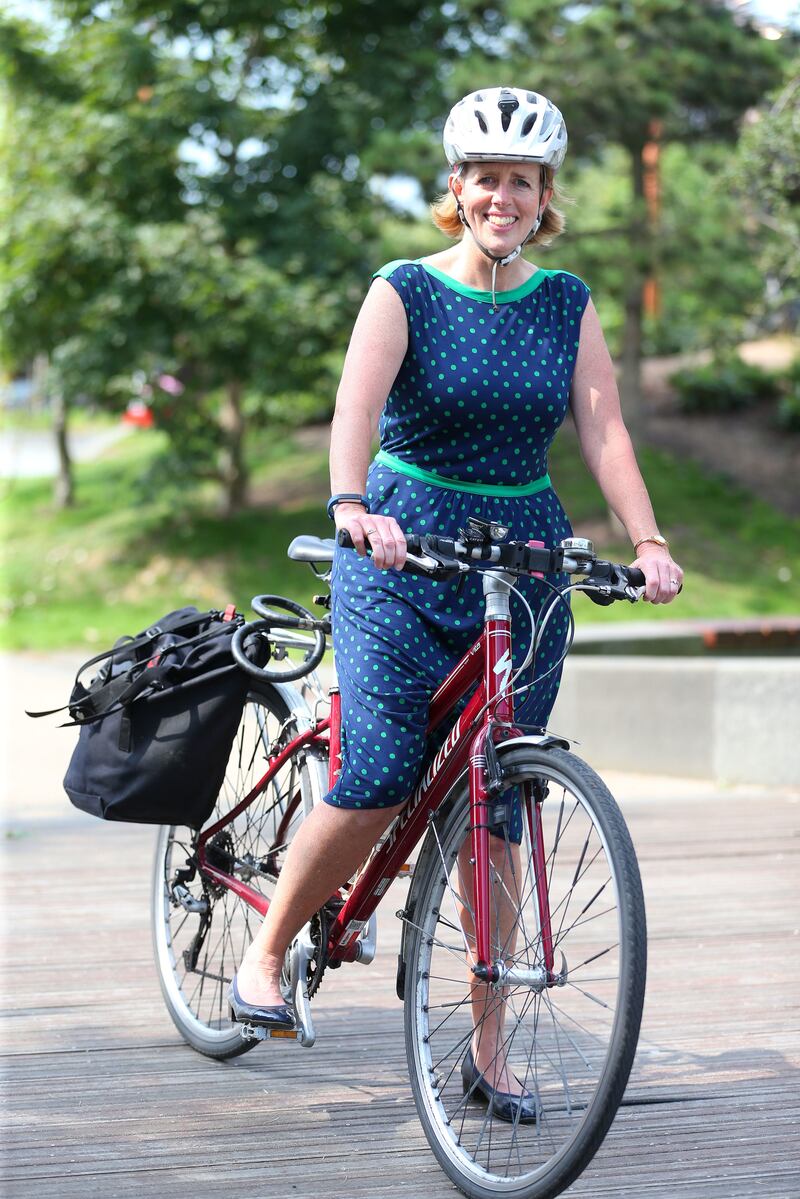
Ms Bloomfield said Sustrans would like to see towns and cities “where the focus is on moving people rather than on moving cars”.
She called for "quieter streets, what we’re calling school streets, where you wouldn’t be allowed to drive near the school or where you’d have reduced speed limits".
And she said “joined up” cycle routes were hugely important.
“We’re very good in Northern Ireland of putting in a few hundred yards of green paint that just stops when you get to a junction or roundabout where you need it the most,” she said.
“Infrastructure needs to be protected and not just paint and it needs to be joined up so that you can get from where you are to where you want to go without spending half your time thinking of a terrifying journey."
She said other measures including cycle skills training for adults and children and better education for drivers is also “critical”.
Sustrans already provides cycle training and operates several schemes aimed at encouraging more people to cycle including a workplace project and an active community travel programme based in Belfast.
“It would be wonderful if all children could get cycle skills training and adults who maybe haven’t cycled in 20 or 30 years and who just need a little bit of support and encouragement to get back on their bikes,” she said.
Ms Bloomfield also called for cycling to become part of a GP exercise referral scheme to encourage more people to get on their bikes.
With many cyclists highlighting glass on the road as a major issue, Ms Bloomfield said “it would be great if cycle paths could be cleaned as often as the roads are”.
She said she was hopeful for the future and predicted that the legalisation of e-bikes in the north "will be a real game changer".
"Last year I was in Scotland and I saw a lot of older people cycling. I got chatting to a few of them and they all said it was the e-bikes, combined with the greenway, that had got them back on a bicycle after many 40 or 50 years," she said.
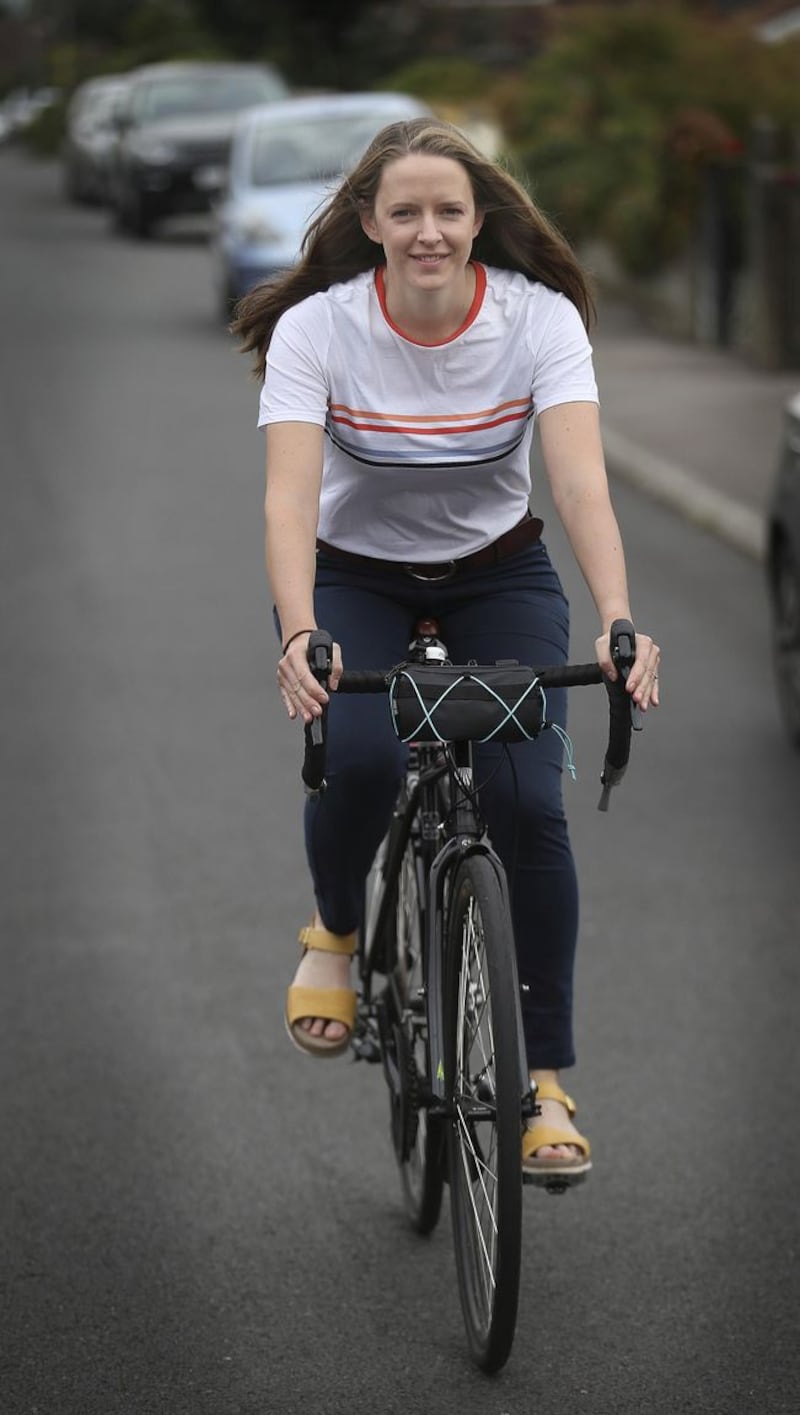
Claire McLernon, a project officer for Outdoor Recreation Northern Ireland, has been cycling seriously since 2005.
She said the reduction in traffic at the height of lockdown, coupled with the good weather, made cycling a joy.
“You were cycling along country lanes in this blazing hot sunshine and there were kids around where I lived (in Moira) with little egg stalls and selling fruit and veg at the end of their driveway,” she said.
The 35-year-old, from Lambeg in Co Antrim, first took up cycling when she was studying civil engineering at Queen’s University in Belfast.
Ms McLernon said lockdown was made more difficult after her grandmother, who was resident in a nursing home, died from the disease.
“That was very much a trigger for me to get out on the bike to keep myself ticking over,” she said.
“It’s definitely one of those things that helps with maintaining good mental and physical health.”
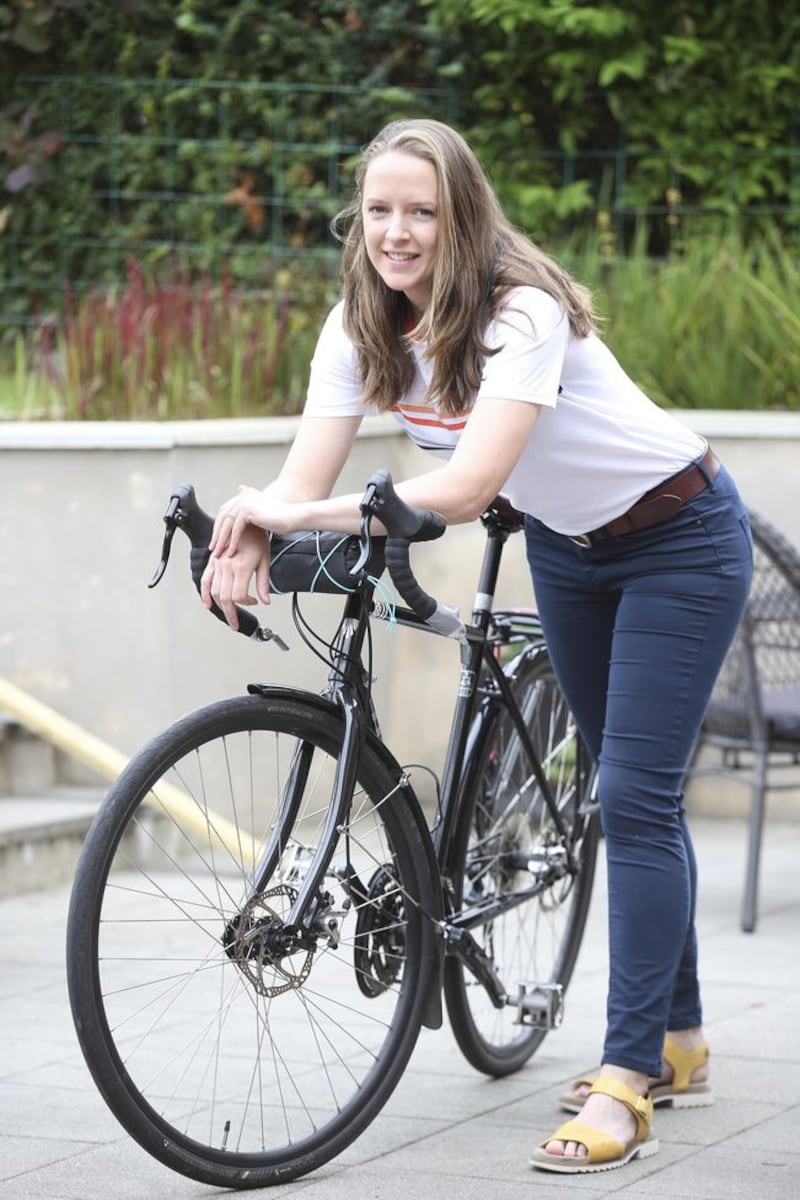
Her background in engineering has given her a different perspective on how to build decent cycling infrastructure.
“I have a recognition of where engineers and planners and decision makers are maybe not facilitated to make enough of a difference,” she said.
"Thinking back to my own engineering training, you learn about how to design a road and how to design for certain speeds of vehicles but there was never any mention of bicycles.”
Echoing Ms Bloomfield’s call for better infrastructure, she said more needs to be done to encourage people living in the countryside to cycle and do more exercise in general.
“Ironically people in the countryside tend to live further away from places where they can safely go to participate in physical activity,” she said.
“For example, they may need to get in their car and drive to a forest park or drive somewhere safe to be able to exercise because of lack of footpaths."
She said there remain “negative perceptions” around cycling, including that it’s only for lycra-clad racers.
But she added that the Netherlands, where more than a quarter of all trips are made by bike, cycling is widely accepted as a common mode of transport.
“They cycle at leisurely speeds, they cycle on comfortable bikes, they cycle in their normal clothes… Cycling can be at whatever pace you want, you don’t have to race, you don’t have to get sweaty," she said.
